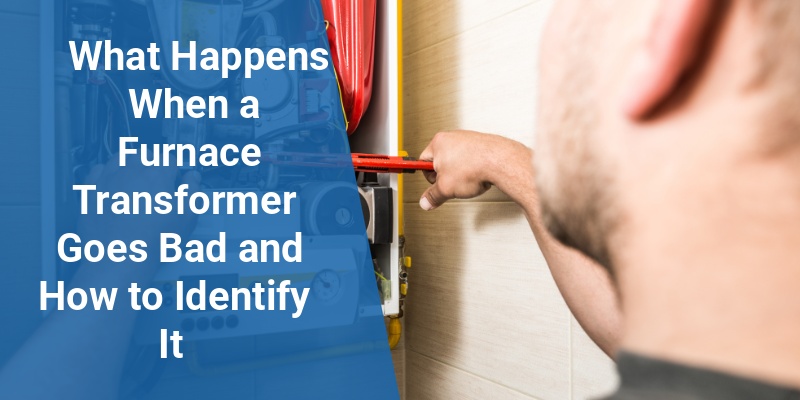The furnace transformer is a crucial component that powers the control circuit in your heating system. When it fails, your furnace may stop working properly, leading to uncomfortable indoor temperatures. Understanding the signs of a bad furnace transformer and the consequences of its failure is essential for timely repairs and maintaining home comfort. This article explores what happens when a furnace transformer goes bad, common symptoms, causes, and remedies to keep your heating system functioning optimally.
| Aspect | Details |
|---|---|
| Role of Furnace Transformer | Supplies low-voltage power to the furnace control board and thermostat |
| Common Symptoms | Furnace does not start, no heat, no blower activation, tripped breakers |
| Causes of Failure | Electrical surges, overheating, age, poor wiring |
| Impacts | System shutdown, safety risks, inefficient furnace operation |
| Repair Solutions | Transformer replacement, wiring inspection, surge protection |
The Role of a Furnace Transformer in Heating Systems
The furnace transformer converts standard household voltage (usually 120 volts) into a lower voltage (typically 24 volts) required to power the furnace’s control circuit and thermostat. This low-voltage power activates components like the ignition system, gas valve, and blower motor controls. Without a functioning transformer, the furnace control board cannot operate, effectively preventing the furnace from running.
Symptoms Indicating a Furnace Transformer Failure
Recognizing a failing transformer early can save time and prevent costly repairs. Typical signs include:
- Furnace Does Not Start: The furnace may not respond to thermostat commands due to lack of control voltage.
- No Heat Production: Even if the furnace starts, ignition and heating elements might fail without sufficient transformer power.
- Blower Motor Failure: The blower may not turn on because it relies on the same low-voltage circuitry.
- Erratic Furnace Behavior: Intermittent heating or system cycling on and off randomly.
- Tripped Breakers or Blown Fuses: Electrical faults caused by a failing transformer can affect the furnace’s circuit protection.
Common Causes Behind Furnace Transformer Malfunction
Understanding why furnace transformers fail can help prevent future issues. Key causes include:
- Electrical Surges: Power surges from storms or grid fluctuations can damage transformer windings.
- Overheating: Poor ventilation or dust accumulation causes excessive heat, degrading the transformer.
- Age and Wear: Transformers have a finite lifespan; extended use leads to insulation breakdown and coil failure.
- Poor Wiring and Installation: Loose connections or incorrect wiring can cause short circuits and transformer damage.
Impact of a Bad Furnace Transformer on System Performance and Safety
A bad transformer disrupts normal furnace operation, resulting in:
- Complete System Shutdown: No control voltage means the furnace cannot initiate the heating cycle.
- Safety Risks: Faulty transformers might cause electrical shorts, increasing fire hazards or damage to other components.
- Reduced Energy Efficiency: Intermittent faults may cause the furnace to run inefficiently, increasing energy bills.
- Potential Damage to Other Parts: Continuous electrical issues can harm the control board, thermostat, and ignition components.
Diagnosing a Faulty Furnace Transformer
Proper diagnosis often requires a professional, but some assessment steps include:
- Measuring Output Voltage: Using a multimeter, the transformer’s secondary voltage should read around 24 volts AC. Significant deviations indicate failure.
- Visual Inspection: Look for burn marks, melted wires, or a burnt smell around the transformer.
- Checking Continuity: Testing the coil windings with an ohmmeter can reveal open or shorted circuits.
- Verifying Circuit Protection: Inspect fuses and breakers that serve the furnace transformer circuit.
Effective Solutions and Replacement Guidance
Once confirmed, replacing a faulty transformer is often the best solution. Key steps and best practices include:
Call 888-906-9139 for Free Local HVAC Quotes – No Obligation, Just Savings!
- Choosing the Right Replacement: Match the voltage rating (typically 24 VAC), power rating (VA rating), and plug type to the original transformer.
- Professional Installation: Ensures correct wiring, secure mounting, and compliance with electrical codes.
- Inspect Related Components: Check the control board, wiring, and thermostat for damage caused by transformer failure.
- Implement Surge Protection: Adding whole-house surge protectors can prolong transformer and furnace lifespan.
Maintenance Tips to Prevent Furnace Transformer Issues
Routine maintenance helps preserve transformer health and furnace reliability:
- Keep Furnace Area Clean: Remove dust and debris to prevent overheating.
- Schedule Annual Inspections: HVAC professionals can detect early electrical issues.
- Monitor for Unusual Noises or Smells: Signals of electrical distress warrant prompt attention.
- Avoid Overloading Circuits: Ensure furnace circuits have dedicated breakers and correct wiring.
When to Call a HVAC Professional
Electrical components like furnace transformers require expert handling. Homeowners should seek professional help if:
- Multimeter Testing Shows Abnormal Voltage or no voltage output.
- There Are Signs of Electrical Burning or Scorching.
- The Furnace Frequently Trips Circuit Breakers.
- Uncertainty About Diagnosis or Replacement procedures.
Working with licensed HVAC technicians ensures safety, proper repairs, and system longevity.
